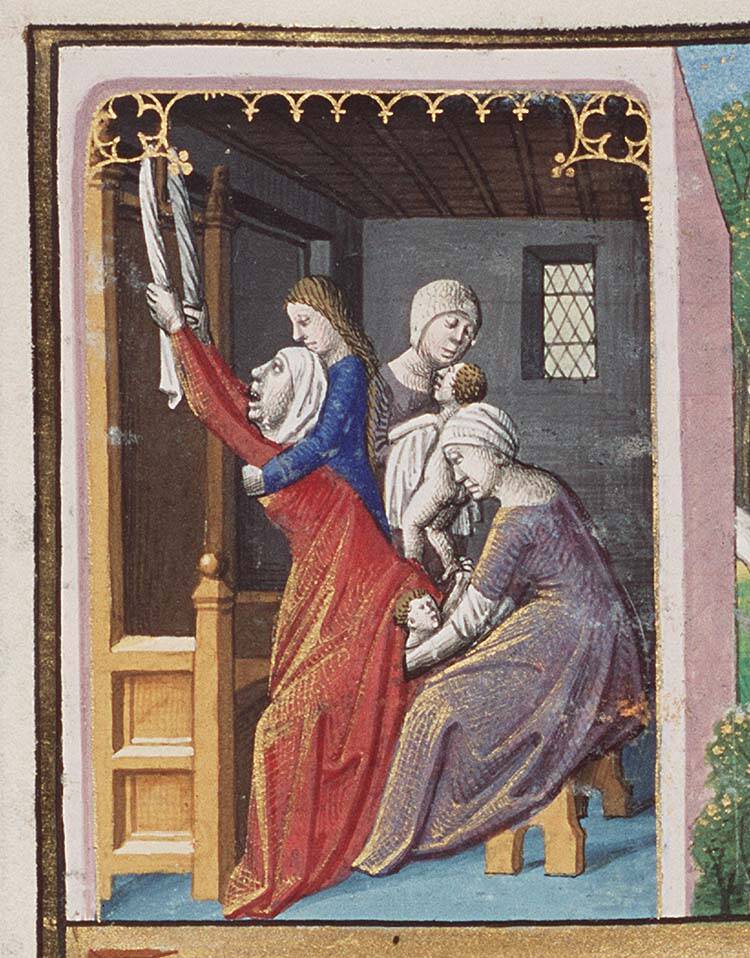How does this affect people who have a menstrual cycle in todays age?
For centuries women have used different methods to handle their cycles, their experiences have gotten us to the technology and acceptance we have today. There is not a lot of information on women's issues such as a menstrual cycle or pregnancy because a menstrual cycle was considered taboo and pregnancy was seen as a natural process instead of a medical one needing doctors. For the most part birth is a natural process, midwives were well trained and the maternal mortality ratio was 170 per 10,000 (or 1.7 percent of women). However if there were issues that is where women were failed, doctors did not feel the need to study birthing complications until the late 19th and early 20th century
Why was it considered taboo?
The Menstrual process, also know as The curse of Eve. The medieval Church was widely to blame for why bleeding every month was stigmatized, women were considered emotionally and physically handicapped by this affliction. Women were seen an impure and men had better "cleanliness". Due to lack of knowing better and sexism during this period of time women were seen to have impure blood. A lot of misconceptions came from historical Greek and Roman texts, overall this topic was not widely researched until the 19th and 20th century because of these stigmatisms.
How did Medieval women deal with their cycles?
In todays day in age a lot of us have access to running water, sanitary products, and the ability to keep ourselves clean at all times.
Have you ever asked yourself what Medieval women did every month?
Lets talk about periods..
Women in medieval times had menstrual cycles like you and me. They were considered taboo, medicine and the understanding of the human body wasn't well studied. They believed in the humoral Theory which was a Greek theory that the body was made up of four fluids. Black, Yellow or red bile, blood, and phlegm. If you had too much of one it was believed that it would lead to disease. Since women bleed every month the doctors believed it was a sign of illness and they were getting rid of their extra blood. People even "believed that anyone who was currently menstruating could make people near them sick. And menstrual blood itself was thought to dull mirrors and even kill crops." (Sarah Waldorf, Larisa Grollemond, 03/02/23, Getting your period in The Middle Ages, Getty)

An illustration of a bloodletting, circa 1675. WELLCOME LIBRARY
Because of the lack of birth control methods women were often pregnant which made mensural cycles occur less often, and it was lighter bleeding. For those who had heavier bleeding or the expected pain from period cramps there were herbal remedies such as Mentha pulegium to help.

Medieval sketch of a woman being controlled by her uterus, transforming her into an evil, boisterous beast
How did they catch the blood?
They couldn't run to the store for a box of Kotex, what did they use to catch the blood? Well, they would use a DIY pad made of linen, they would wash and reuse or a specific type of moss because of its absorbency. However, other women would just free bleed due to lack of alternatives.

Giving birth in the Medieval Period
Now that we have talked about menstrual cycles, lets talk about giving birth in medieval times. It was a dangerous affair and there was a high mortality rate for mothers and babies. The event was a group effort, families, priests, and midwives gathered to assist often at home or for aristocrats there was a designated birthing chamber. Midwives were underpaid and expected to be a moral authority to make sure children were baptized in fear for the child's soul. English Midwives were sometimes accused of witch craft, doctors and surgeons rarely helped in delivering, usually only in the instance of someone royal giving birth or the mother has passed and they would need to preform a cesarian in order to save the infant but the midwives commonly were trained to do that as well. Men were invested in the affair in the hopes of continuing the family line.
fresco by painter da Milano in 1365 of The Birth of The Virgin.
Giving birth in a hospital was not common, but for unmarried women given their poor social status it was usually the only option, there were also a lot of babies abandoned there who were then cared for by wet nurses. Since giving birth was not seen as a medical issue and physicians didn't often attend births there was not a lot of documented advice on giving birth. If someone had GYN issues, struggled with fertility, needed to turn the baby if it was breach, or even needed to be stitched up after birth there was documented advice on that.
Birth of Jacob and Esau in Hague MS MMW 10 A 11.
Conclusion
At the end of the day it is important to remember everything women in history have endured for us to have the modern comforts we have, there is still existing stigmatism and control over women's bodies to this day. Women having access to life saving medical care is a something we still have to advocate for. Women have always been there for each other and they will continue to be there for each other in the modern area as well.

Create Your Own Website With Webador